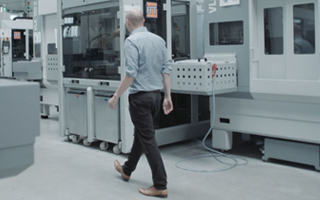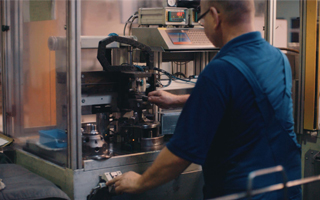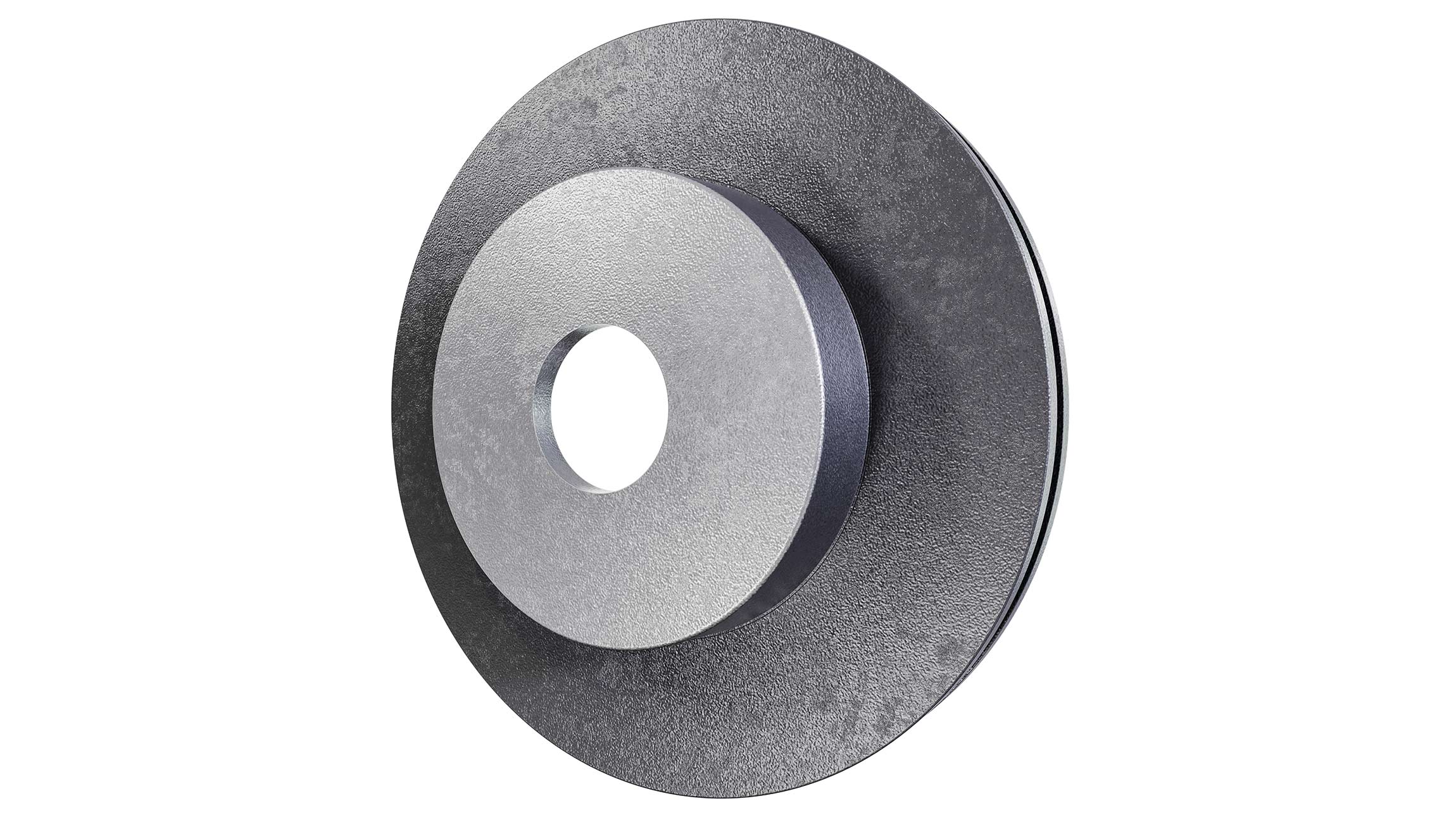
The Ultimate Guide to Automotive Brake Discs: Performance, Maintenance, and Upgrades
The MAT Foundry Group specialises in cast and machined products, producing over 350,000 tons of iron annually.
With seven foundries and ten machining facilities spread across Europe, Asia, and North and Central America, MAT Foundry is one of the globe's leading manufacturers of car parts, and a known innovator in the automotive component sector.
In the world of automotive safety and performance, brake discs play an indispensable role. These components are crucial for ensuring effective braking, which is essential not only for vehicle safety but also for enhancing performance characteristics such as handling and stability. The quality, design, and material of the brake discs directly influence these aspects, making them a key focus for automotive Original Equipment Manufacturers (OEMs).
This comprehensive guide is designed to assist OEMs in making informed decisions about brake disc technologies, as well as helping them understand the impact of these components on overall vehicle performance and safety.
Given MAT Foundry Group’s expertise and extensive experience in this area, the insights provided here are more than just theoretical - they’re backed by practical, real-world applications and innovations. Most importantly, they’ll equip you with the essential knowledge to help your components to excel in their final application.
So, let’s put the pedal to metal and get started!
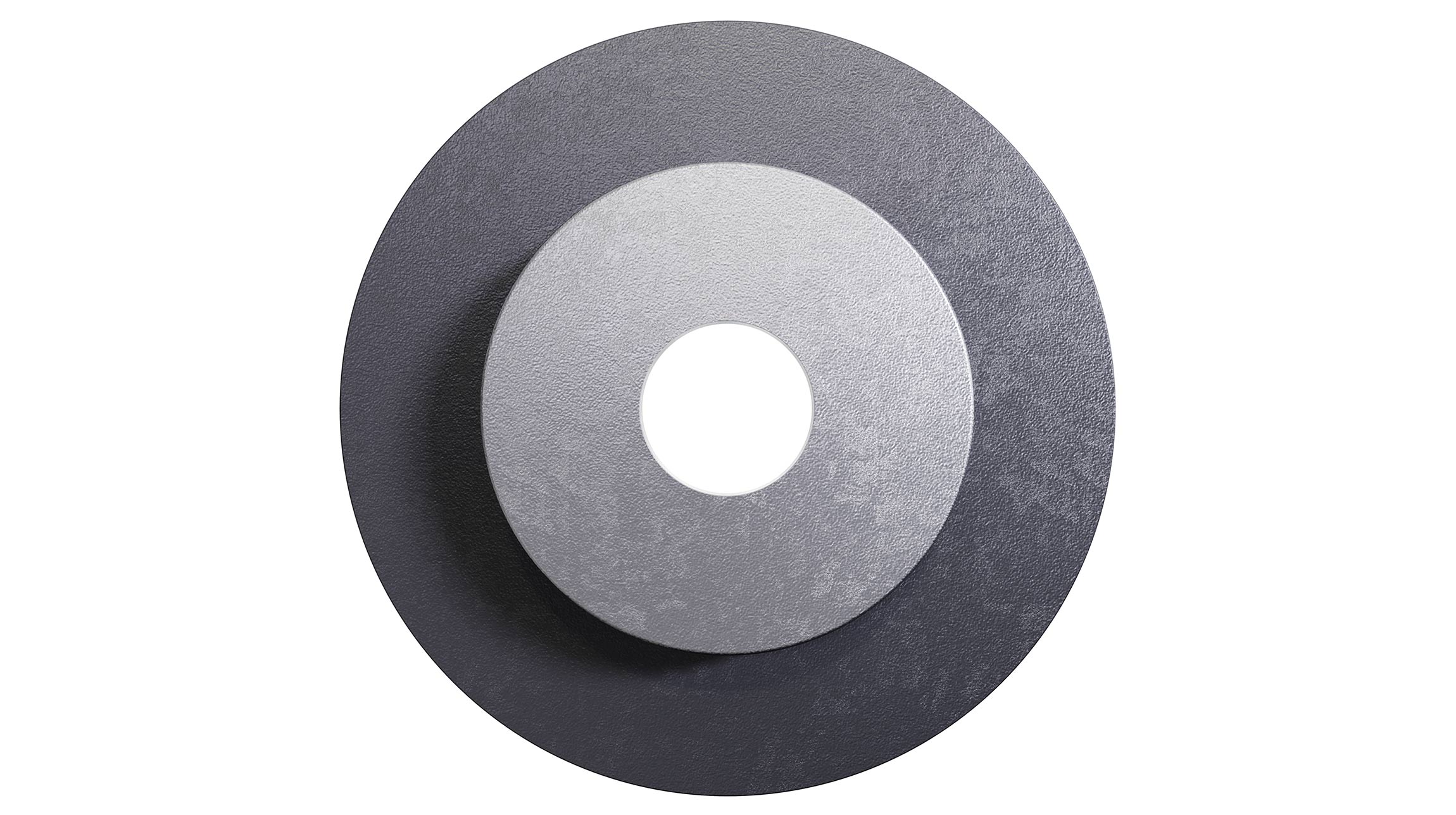
Understanding Brake Discs
Basics of Brake Discs
Brake discs, also known as rotors, are a crucial component of a vehicle's braking system. They work in tandem with the brake pads to slow down or stop a vehicle. When the brake pedal is pressed, the brake pads clamp onto the discs, using friction to reduce the vehicle's speed. This system is vital for ensuring safe driving conditions.
The manufacturing of brake discs predominantly involves the use of grey cast iron, known for its good thermal conductivity, high heat capacity, and excellent wear resistance. This material is favoured for its ability to withstand high temperatures without deforming. However, advancements in technology have led to the exploration of alternative materials like carbon-ceramic composites, offering superior heat dissipation, lighter weight, and reduced wear (albeit at a higher cost).
Brake discs are available in various types, each designed for specific applications and performance needs.
These include:
Vented Discs. These discs have internal vanes between two friction surfaces and are designed to dissipate heat more effectively. They are commonly used in high-performance and heavy vehicles where braking systems are subject to high temperatures.
Solid Discs. Typically found in smaller, lighter vehicles, these discs are simpler and more compact but less effective at heat dissipation compared to vented discs.
Drilled Discs. These have holes drilled through the braking surface to aid in heat dissipation and are often used in performance vehicles. The holes also help reduce brake fade and clear water from the disc surface in wet conditions.
Slotted Discs. Featuring grooves on the friction surface, slotted discs improve the pad bite and are suitable for high-performance applications. However, they can cause faster wear of brake pads.
Role in Vehicle Performance
Brake discs have a strong influence on vehicle safety. A well-designed brake disc ensures efficient deceleration and stopping, crucial in preventing accidents. In turn, the performance of brake discs directly affects the braking distance, a critical safety parameter in vehicle dynamics. Moreover, consistent performance of brake discs under various driving conditions (like wet or high-speed scenarios) is essential for overall vehicular safety.
Brake discs also play a significant role in the overall performance of a vehicle.
High-quality discs contribute to smoother and more predictable braking, enhancing the driver's control and confidence. This is especially important in high-performance or racing vehicles, where precise braking can significantly impact handling and lap times.
Additionally, the weight of the brake discs contributes to the un-sprung mass of the vehicle, affecting its suspension response and ride quality.
Industry Standards and Regulations
The manufacturing and design of brake discs are governed by stringent global standards and regulations. These standards ensure the safety, reliability, and performance of brake discs across various conditions.
Key regulations include:
Federal Motor Vehicle Safety Standards (FMVSS) in the United States.
European ECE regulations.
ISO standards that provide guidelines on dimensions, quality, and performance criteria for brake discs.
MAT Foundry Group stays at the forefront of these regulations, adhering strictly to these standards in their manufacturing processes.
The company's commitment to quality and safety is reflected in its multiple certifications - including ISO 9001 and ISO/TS 16949, which reinforce its dedication to quality management, as well as consistent quality assurance in automotive parts manufacturing.
On the whole, OEMs can trust MAT Foundry to produce brake discs that not only meet, but often exceed industry standards.
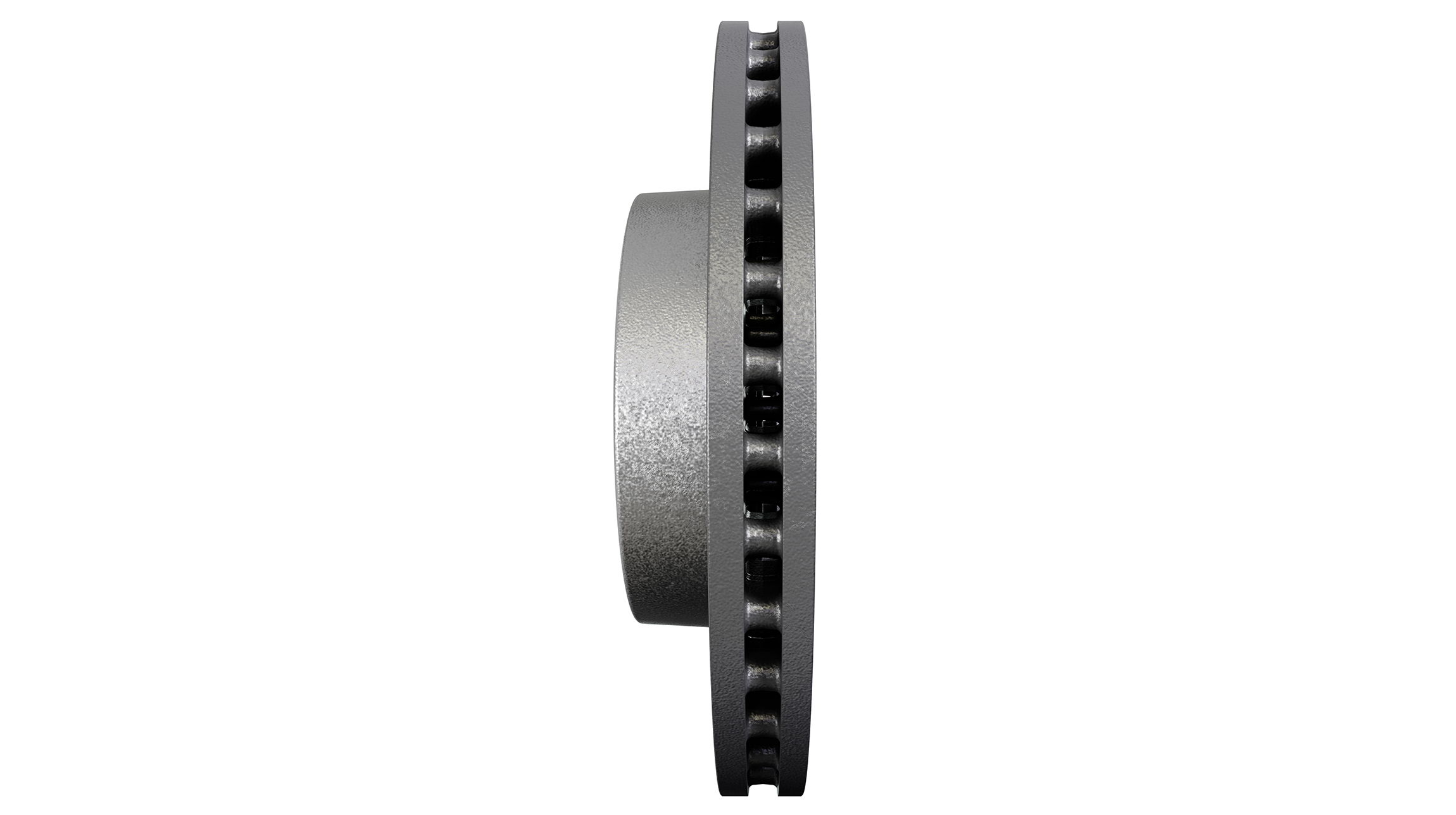
Brake Disc Performance
Performance Criteria
Evaluating the performance of brake discs involves a set of Key Performance Indicators (KPIs) that ensure these components meet the highest standards of safety, efficiency, and durability.
Among these KPIs are:
Heat Dissipation. The ability of a brake disc to dissipate heat efficiently is crucial, as it directly impacts the brake system's resistance to fade under heavy or sustained braking conditions.
Wear Resistance. This measures how well the brake disc can withstand wear over time, affecting its lifespan and the consistency of braking performance.
Thermal Conductivity. A key property that helps manage the heat generated during braking, ensuring the brake disc does not warp or crack under high temperatures.
Friction Consistency. The ability to maintain consistent friction levels across various temperatures and conditions is vital for predictable braking.
Testing and evaluation methods for these KPIs include rigorous laboratory tests, such as dynamometer testing, which simulates various braking conditions to measure performance, wear, and heat management. On-vehicle testing is also essential, as it provides real-world data on how the brake discs perform under actual driving conditions.
Innovations and Technologies
Brake disc technology is continuously evolving, resulting in improved performance, safety, and reliability. Some of the notable advancements include:
High-Carbon Cast Iron Discs. By increasing the carbon content, brake discs can offer improved thermal conductivity and heat dissipation, enhancing braking performance and resistance to thermal cracking.
Composite Materials. The exploration into composite materials, such as carbon-ceramic, has led to the development of brake discs that are significantly lighter, more durable, and offer superior performance, especially in high-performance and racing applications.
Coating Technologies. The latest coating technologies can protect against corrosion, extend the life of the brake discs, and maintain aesthetic appeal without compromising performance.
Geometric Innovations. Introducing novel designs, such as curved vanes and optimised drilling patterns, enhances airflow and cooling, further improving heat dissipation and reducing brake fade.
Sustainability remains high on agenda of brake disc technology. Innovations in material science, such as the use of recycled materials and the development of new alloys, promise to offer even greater efficiency and performance.
Furthermore, the integration of smart technologies - such as sensors for wear detection and temperature monitoring - is set to revolutionise brake disc technology by offering advanced diagnostics and predictive maintenance capabilities.
These combined factors indicate that brake disc performance has far from reached its peak, and we can expect even more impressive technology to reach the production line in coming years.
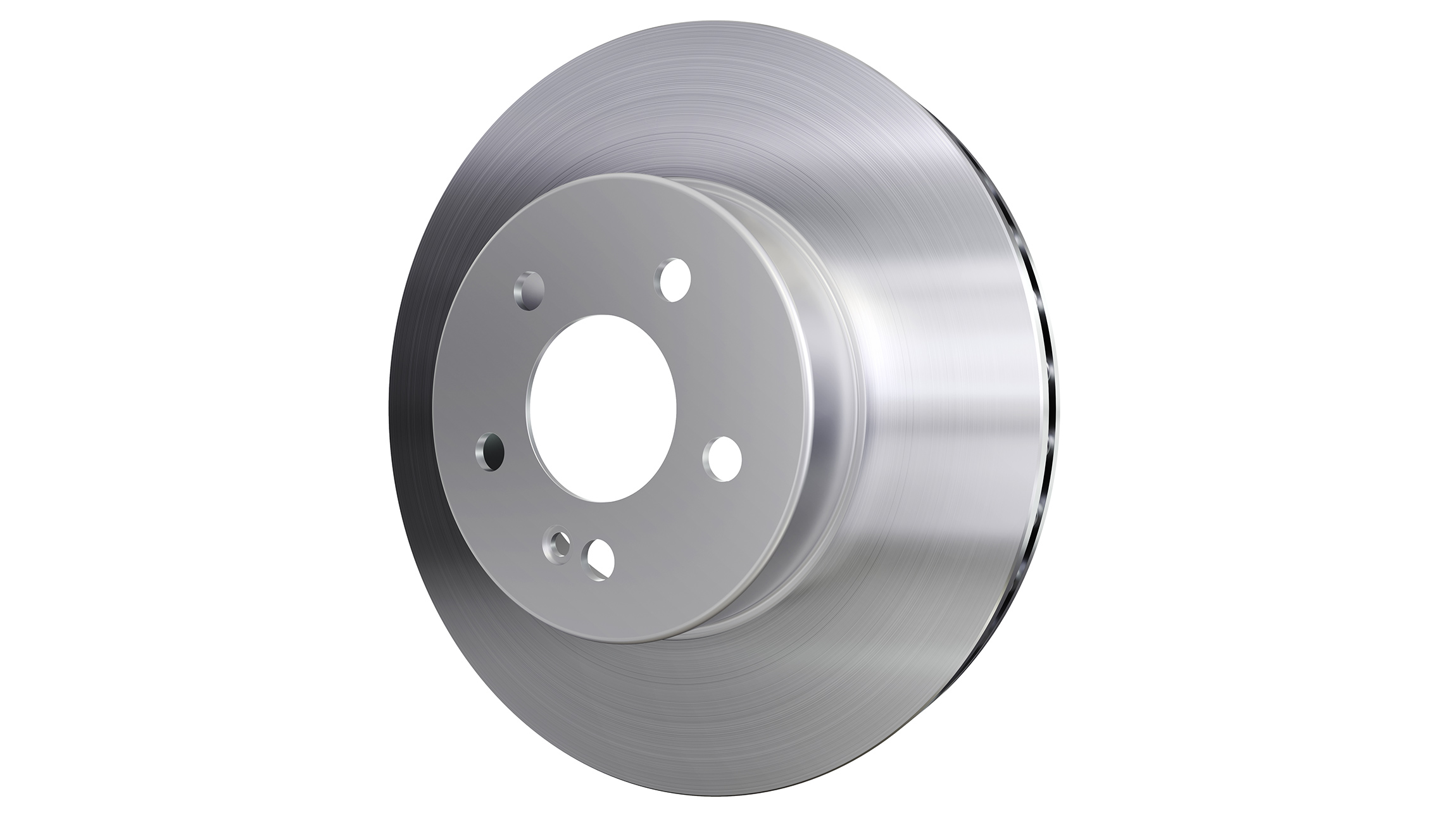
Maintenance Best Practices
Effective maintenance of brake discs is vital to ensuring vehicle safety and longevity of the braking system. Regular maintenance routines help identify potential issues before they escalate into costly repairs – or worse, lead to accidents.
Key practices include:
Regular Inspection. Brake discs should be inspected at every service interval for signs of wear, including thickness variation, cracks, warping, and scoring. This is critical for identifying issues that could impair braking performance.
Cleaning. Accumulation of brake dust and debris can affect the braking system's efficiency. Regular cleaning of the brake discs helps maintain optimal contact between the disc and brake pads.
Checking for Runout. Brake disc runout can lead to vibrations during braking. It's important to check for runout with a dial indicator and ensure it's within the manufacturer's specifications.
Pad Replacement and Bedding-In. Whenever brake pads are replaced, it's crucial to ensure they are properly bedded-in to optimise contact with the brake discs. This involves a series of gentle braking manoeuvres to coat the disc surface with brake pad material, enhancing braking efficiency.
Common issues that may arise include squealing noises, which often indicate worn pads or glazed discs; vibrations, which may suggest warped discs; and reduced braking performance, which could be due to various factors including worn discs or pads. Addressing these issues promptly can prevent further damage and maintain optimal braking performance.
Lifecycle Management
The lifespan of brake discs varies significantly depending on driving habits, vehicle type, and environmental conditions. On average, brake discs can last between 30,000 to 70,000 miles, but aggressive driving styles, frequent stop-and-go traffic, or harsh conditions can drastically reduce this lifespan.
Factors affecting wear and tear include:
Driving Conditions. Urban driving with frequent stops wears brake discs more quickly than motorway driving. Similarly, driving in mountainous areas or heavy towing requires more from the braking system, leading to increased wear.
Material and Quality. High-quality brake discs, such as those manufactured by MAT Foundry, typically offer longer lifespans due to superior materials and manufacturing processes. Material composition, including the use of high-carbon content or composite materials, also influences durability.
Braking Habits. Aggressive braking or riding the brakes can cause excessive heat, leading to faster wear and potential warping of the brake discs.
Vehicle Load. Heavily loaded vehicles or those used for towing put additional strain on the brake discs, accelerating wear.
Managing the lifecycle of brake discs involves regular monitoring and maintenance, along with driving habit adjustments to minimise unnecessary stress on the braking system. Upgrading to higher-quality brake discs can also extend lifespan and improve performance, particularly for vehicles subjected to demanding conditions.
By adhering to maintenance best practices and understanding the factors that influence brake disc wear, vehicle owners and fleet managers can ensure that their brake systems remain in optimal condition, providing reliable performance and safety on the road.
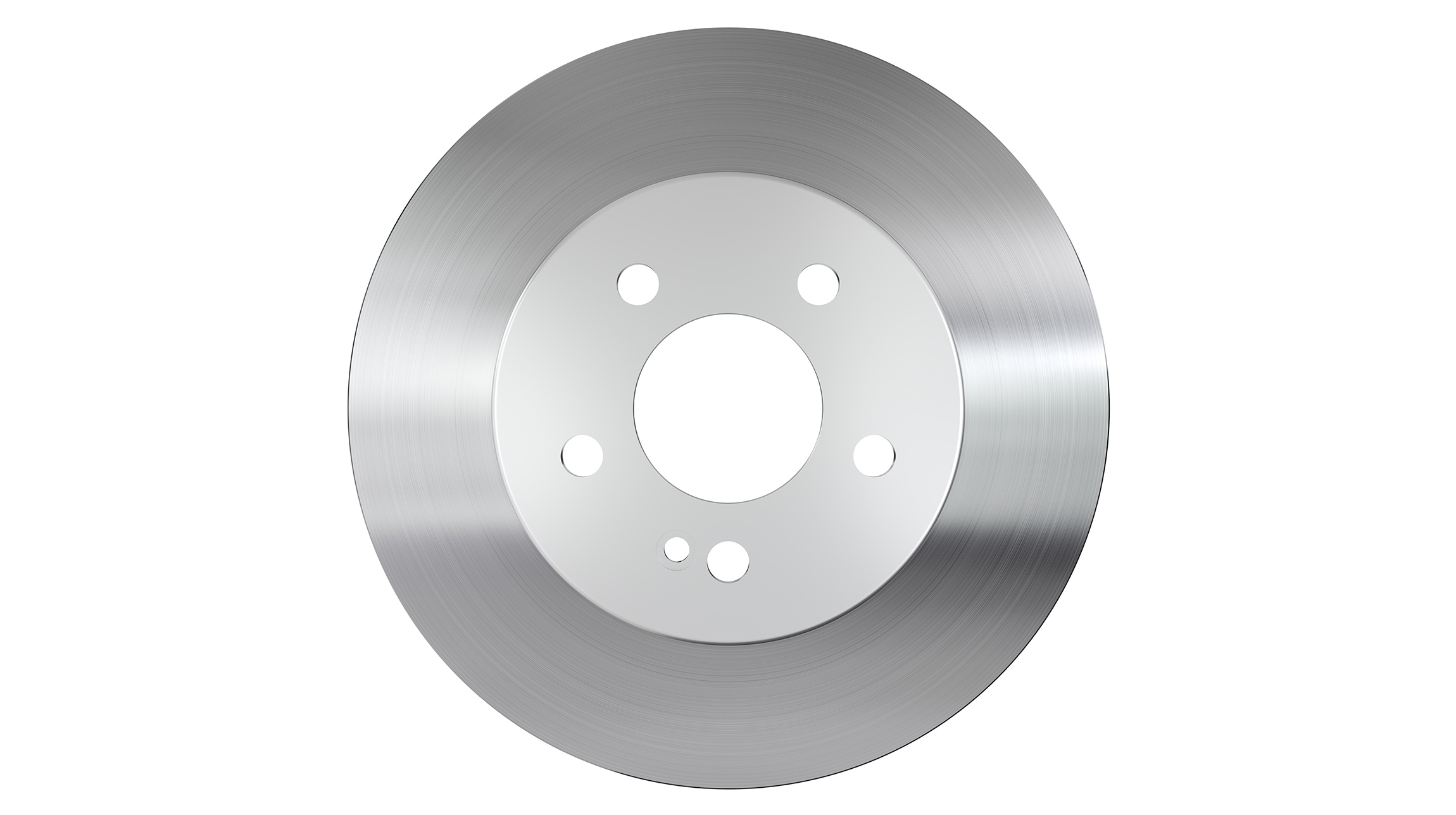
Upgrading Brake Discs
When to Upgrade
Upgrading brake discs is a consideration for those seeking enhanced performance, durability, or specific driving requirements.
Identifying the need for an upgrade involves several factors…
Performance Limitations. If the current braking system fails to meet performance expectations - especially under high-demand conditions such as racing, heavy towing, or frequent mountainous driving - an upgrade may be necessary.
Wear and Damage. Excessive wear, warping, or damage that cannot be rectified through standard maintenance might necessitate an upgrade to more durable or performance-oriented brake discs.
Vehicle Modification. Upgrading other vehicle components, like the engine for higher power output, often requires an upgrade in the braking system to handle the increased performance demands.
Evaluation criteria for upgrades should consider:
Compatibility. You should ensure the new brake discs are compatible with the vehicle’s make, model, and existing brake system.
Performance Needs. Choosing brake discs that meet the specific performance requirements, such as improved heat dissipation or reduced stopping distances, is a must.
Material and Design. Be sure to consider the benefits of different materials and designs based on the driving conditions and performance expectations.
Cost vs. Benefit: Weighing the cost of the upgrade against the expected performance improvement and lifespan extension can ensure value.
Upgrade Options and Solutions
The market offers a variety of brake disc upgrades, each providing different benefits in terms of material, design, and technology.
Material Upgrades. Moving from standard cast iron to high-carbon content discs or even to advanced composites like carbon-ceramic can offer improvements in heat management, weight reduction, and longevity.
Design Upgrades. Options include vented discs for better cooling, drilled and slotted designs for improved heat dissipation and water clearance, and discs with special coatings to prevent rust and extend lifespan.
Technology Upgrades. Some brake discs come with integrated wear indicators or advanced materials that change colour at high temperatures to indicate overheating, providing additional safety features.
Implementation and Integration
Implementing brake disc upgrades requires careful planning to ensure compatibility and maximise performance benefits.
Professional Assessment. Consulting with a professional mechanic or automotive engineer can help determine the most suitable upgrade options for your vehicle and driving needs.
Compatibility Check. It’s essential to verify that the upgraded brake discs are compatible with the existing brake calipers, pads, and wheel size. In some cases, additional upgrades may be necessary to accommodate the new discs.
Installation Best Practices. Professional installation is recommended to ensure that the brake discs are correctly fitted and aligned. During installation, it's also a good opportunity to replace brake fluid and inspect brake lines, pads, and calipers for any signs of wear or damage.
Bedding-In Process. After upgrading, a proper bedding-in process is crucial. This involves a series of controlled braking manoeuvres to evenly distribute brake pad material onto the disc surface, optimising braking efficiency and extending the lifespan of the brake discs.
Ensuring compatibility with existing systems is essential. This includes the vehicle’s ABS (Anti-lock Braking System), electronic brake distribution, and any other integrated safety features. Upgrades should enhance the vehicle’s performance without compromising the functionality of these systems.
Upgrading brake discs can significantly improve a vehicle’s braking performance, safety, and reliability, especially when properly selected and implemented. By carefully considering the need, options, and best practices for upgrading, vehicle owners can ensure a successful enhancement to their braking system, tailored to their specific driving needs and performance goals.
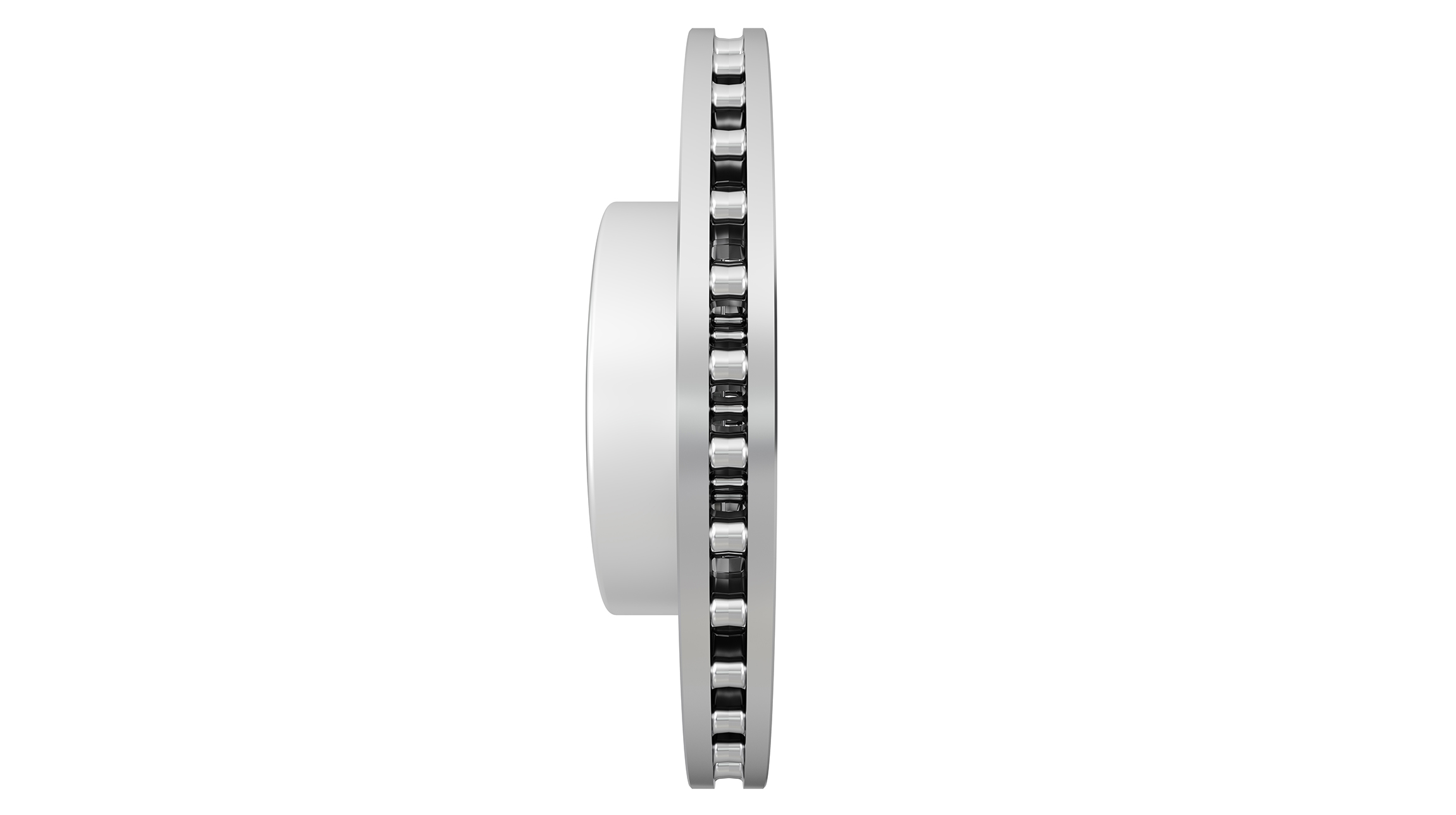
Environmental and Sustainability Considerations
The automotive industry is increasingly focusing on environmental sustainability, with eco-friendly practices becoming crucial in manufacturing and recycling processes. This is particularly relevant for brake disc production, where the potential environmental impact is significant due to the materials used and the manufacturing processes involved.
The automotive industry, at every level from design to manufacture, is committed to minimising this impact through various eco-friendly practices.
These include…
Material Sourcing. Prioritising the use of sustainably sourced materials is the first step toward eco-friendly manufacturing. This includes using recycled metals and materials that require less energy to produce. MAT Foundry Group, for example, emphasises the procurement of materials that meet high environmental standards.
Energy Efficiency. Implementing energy-efficient manufacturing processes reduces the carbon footprint of producing brake discs. This can involve using advanced machinery that consumes less power, optimising production lines for minimal energy waste, and employing renewable energy sources where possible.
Waste Reduction. MAT Foundry Group focuses on minimising waste production through efficient design and manufacturing processes. This includes recycling scrap material generated during the manufacturing process and using closed-loop water systems to reduce water consumption and waste.
Advanced Coating Technologies. Eco-friendly coatings that are free from harmful chemicals are used to protect brake discs from corrosion. These coatings are applied using environmentally friendly processes that emit lower volatile organic compounds (VOCs), contributing to better air quality.
Recycling of Brake Discs
End-of-Life Vehicle Recycling. As part of the vehicle recycling process, brake discs are removed and separated from other materials. The iron or composite materials can then be recycled and reused in the production of new brake discs or other products, reducing the need for virgin materials.
Recycling Programs. MAT Foundry Group encourages and participates in recycling programs that facilitate the collection and recycling of used brake discs. By supporting such initiatives, the company contributes to a circular economy, where materials are kept in use for as long as possible and waste is minimised.
Innovations in Recyclable Materials. Research and development efforts are directed towards creating brake discs from materials that are easier to recycle. This includes exploring new metal alloys and composite materials that can be more efficiently recycled at the end of their life cycle, without compromising performance.
By committing to environmental stewardship, the production and recycling of brake discs can contribute to a healthier planet - aligning with global efforts to combat climate change and reduce industrial carbon footprints.
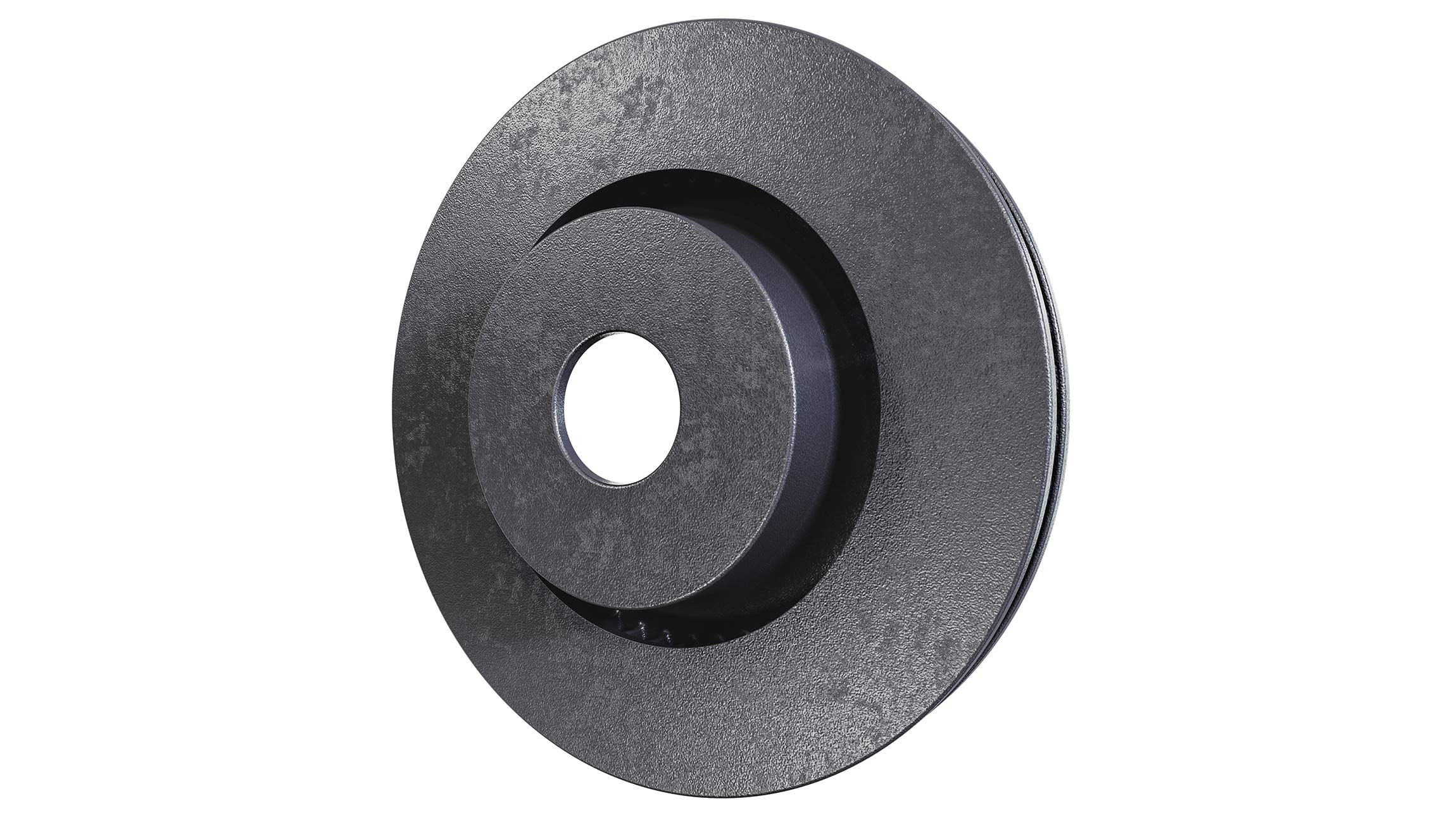
Braking New Ground: Automotive Brake Disc Production with MAT Foundry
In this comprehensive guide, we've explored the multifaceted world of automotive brake discs, emphasising their crucial role in vehicle performance, safety, and the overarching importance of sustainable manufacturing practices.
If you’re looking for a manufacturing partner to assist in the production of industry-leading brake discs, look no further than MAT Foundry.
MAT Foundry Group has established itself as a leader in the innovation, quality, and environmental stewardship of the automotive parts industry.
With its global footprint, cutting-edge manufacturing capabilities, and relentless pursuit of excellence, MAT Foundry is a trusted partner to automotive OEMs worldwide. Its commitment to sustainability, coupled with complete dedication to safety and performance, positions MAT Foundry at the forefront of addressing the challenges and opportunities in the automotive landscape.
Discover more about Brake Discs
DISCOVER MORE ABOUT THE MAT FOUNDRY GROUP
News and blogs
-

Glorious Goodwood: The Need for Speed
1st Aug 2025
Read More -
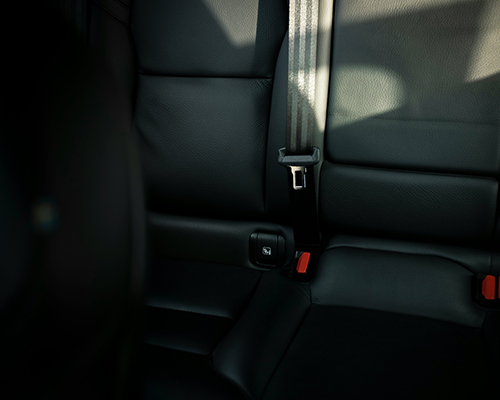
How A New Seat Belt is Set to Improve Accident Survival
10th Jul 2025
Read More -

Is The AirCar the Future of Mobility?
30th May 2025
Read More -

Top 12 Strangest Driving Laws From Around The World
25th Apr 2025
Read More -

Over The Air Software Updates: What Are They and Do They Really Increase The Value of Your Car?
12th Mar 2025
Read More -

Ferrari's First Fully Electric Car: What We Know So Far
19th Feb 2025
Read More -
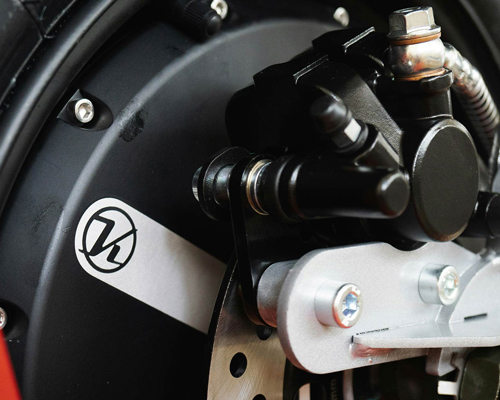
The Future of Brake Calipers: Innovations and Trends
27th Jan 2025
Read More -

How Often Should You Replace Your Brake Calipers?
27th Jan 2025
Read More -
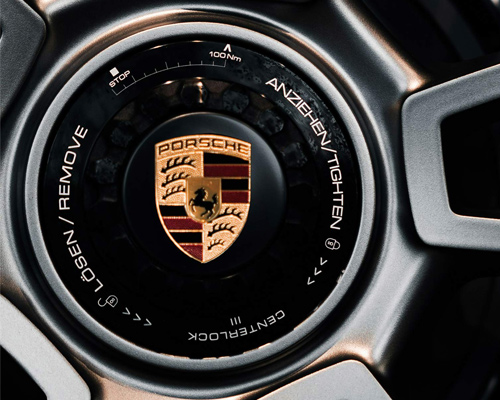
How to Choose Brake Calipers for High-Performance Vehicles
27th Jan 2025
Read More -
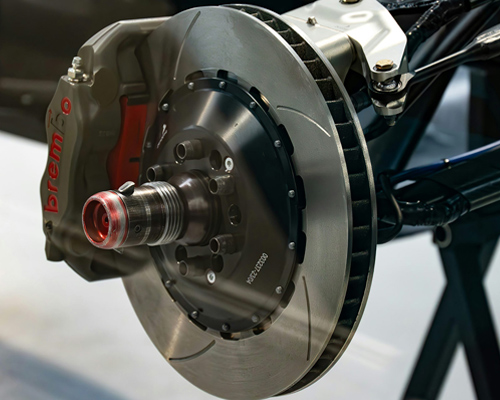
Best Brake Calipers for SUVs and Trucks
27th Jan 2025
Read More


